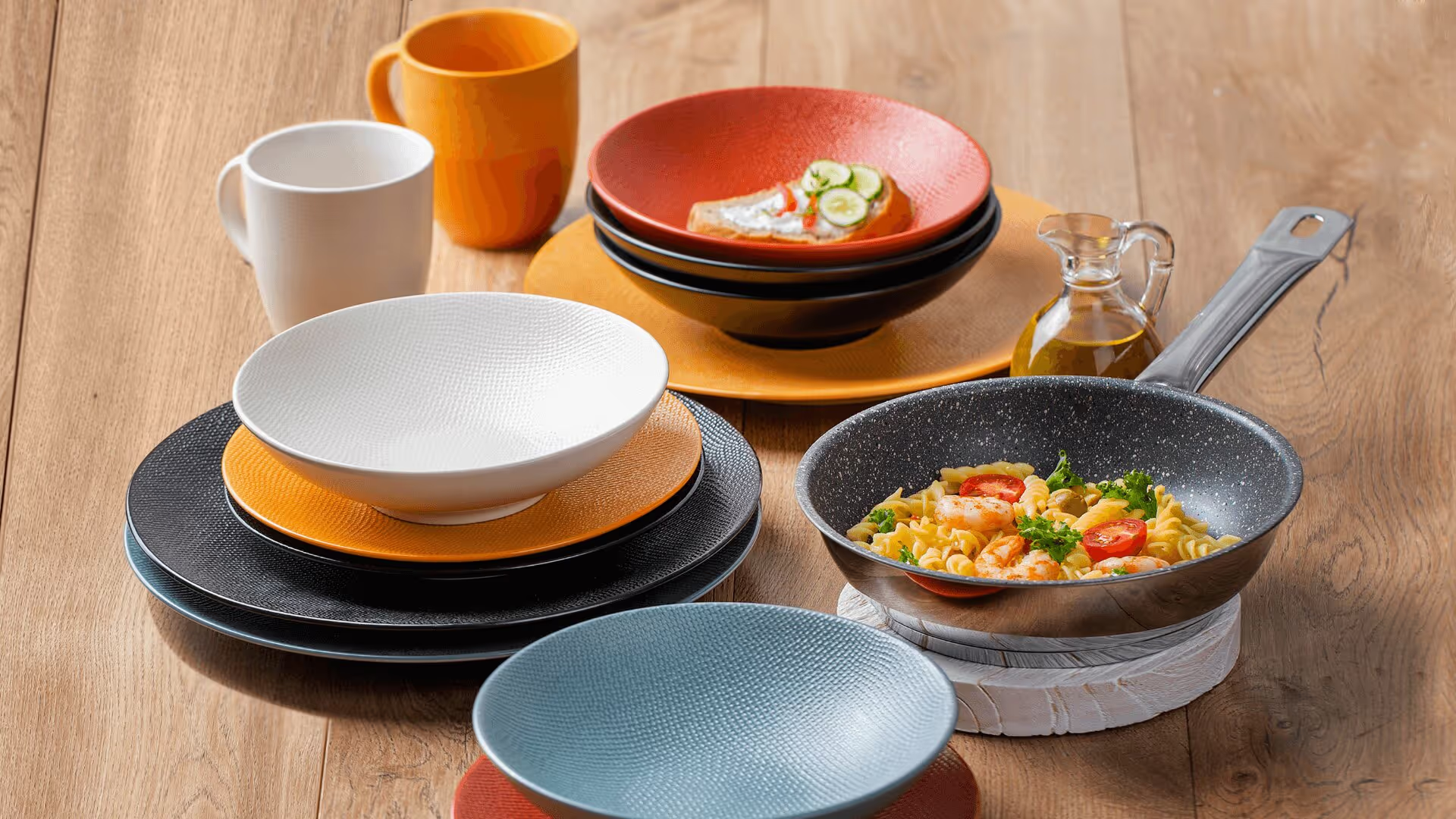Ottoman Ceramics: Splendor in Clay and Color
Ceramic Tableware
By: Jeff
15 Mar 2024

The grandeur of the Ottoman Empire extended far beyond its military prowess and architectural achievements—it flourished just as vividly in the realm of decorative arts. Among its most exquisite expressions was its ceramic production, especially the lavish dinnerware and tableware that adorned palaces and noble households. The Topkapi Palace Museum in Istanbul holds some of the finest examples of this legacy, with collections that offer a window into the rich history of Ottoman aesthetics and domestic culture.
The Legacy of Ottoman Ceramic Art
Ottoman ceramics reached their artistic peak between the 15th and 17th centuries, particularly in the city of Iznik, where artisans developed a distinctive style characterized by vibrant cobalt blues, emerald greens, and bold reds. The iconic floral motifs—tulips, carnations, and saz leaves—alongside arabesques and calligraphy, turned everyday objects into works of art.
The dinner plate was not just a vessel for food, but a canvas for intricate design. These plates often featured symmetrical compositions and vibrant color schemes, elevating their function at the dining table. Such dinnerware was reserved for the elite and the royal court, their complexity and craftsmanship a testament to wealth and refined taste.
Tableware Fit for Sultans
The tableware used in the Topkapi Palace was more than utilitarian—it was part of the palace's visual language of opulence. Dinner sets comprising plates, bowls, cups, and pitchers were created with consistency in motif and form, designed to impress guests during feasts and formal banquets. The scale and coordination of these dinner sets demonstrated the organizational and artistic sophistication of the Ottoman court.
Even during the famed Topkapi feasts, where hundreds of dishes were served, every dinner plate had to reflect not only the culinary art but also the imperial style. Table settings were meticulously arranged, creating a visual harmony that matched the lavish food presentations.
Gifting and Hampers in Ottoman Society
In Ottoman society, the act of gifting played a central role in diplomacy and social cohesion. Elaborate hampers were prepared for foreign dignitaries, religious leaders, and noble families, often including fine textiles, spices, sweets—and, notably, ceramic dinnerware. These hampers were curated with attention to luxury and symbolism, making the inclusion of a fine dinner plate or ceramic vessel a powerful gesture of goodwill and prestige.
These hampers symbolized not only generosity but also the empire’s cultural superiority. Gifting an Iznik porcelain piece was akin to sharing a piece of the empire’s artistic soul.
Preservation and Influence
Today, the Topkapi Palace Museum preserves an extraordinary collection of Ottoman ceramics, offering a glimpse into the sophisticated lifestyle of the imperial court. These artifacts continue to inspire contemporary tableware design, with modern artisans and designers often drawing from Ottoman motifs and color palettes to create new dinner sets that blend tradition with modern functionality.
The legacy of Ottoman ceramics lives on, not just in museums but on dining tables around the world, where echoes of their elegance and craftsmanship continue to captivate.
Conclusion: Where Art Meets Utility
From the ornate dinner plate to the harmonized dinner set, Ottoman ceramics exemplify how beauty and utility can coexist. These pieces were more than just tableware—they were symbols of empire, culture, and craftsmanship. And in the thoughtful arrangement of imperial hampers, they served as silent ambassadors of Ottoman sophistication.
As we admire the collections of the Topkapi Palace Museum, we are reminded of a time when every piece of dinnerware told a story—of empire, of artistry, and of a timeless appreciation for the beauty of everyday objects.


